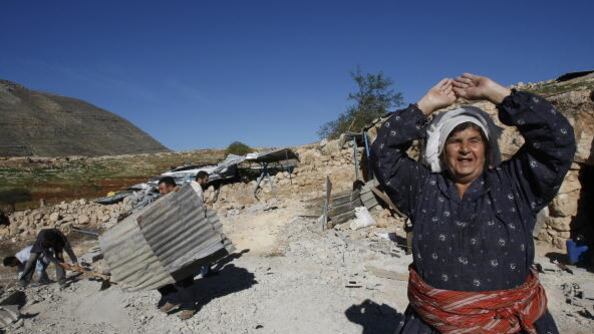Before rising to the office of Prime Minister (again) and finally endorsing a Palestinian state, then-Likud Charmian Benjamin Netanyahu laid out an alternative to all those hairy issues of ending the occupation: make the Palestinian economy better. But the plan, known as "economic peace," has run into an ironic roadblock: the occupation.
A report released by the World Bank yesterday warns of the impending Palestinian Authority fiscal crisis and placed some of the blame for slow economic growth on Israel. "[R]estrictions put in place by the Government of Israel continue to stand in the way of potential private investment," said the report, "and remain the major impediment to sustainable economic growth."

The report was most scathing when it came to the Oslo-era division of the West Bank into Areas A, B and C. Area A, only a small portion of the territory that contains most of the population centers, is under full PA control. Area C is administered completely by Israel, and Palestinian economic development in that land—nearly two thirds of the West Bank (see map below)—are "almost impossible" due to restrictions, yet necessary for Palestine to reach its economic potential:
Most notably, the continued geographical fragmentation of Area C (envisaged under the Oslo Accords as a temporary arrangement), poses a binding constraint to real economic growth, essential to support the future Palestinian state. Area C's significance, as the only contiguous land in the West Bank connecting 227 separate geographical areas (A and B), is the key to economic cohesion and is the most resource abundant space in the West Bank holding the majority of the territory's water, agricultural lands, natural resources, and land reserves that provide an economic foundation for growth in key sectors of the economy.
Because of restrictions, the Palestinians have only built up a mere one percent of Area C, and even that is subject to checkpoints and an arduous permitting process.
How do we know Area C is economically viable, and even important for growth? Because the Israel settlements continue to proliferate there—on 5 percent of Area C (and growing) and exerting control over more than 40 percent of land in the West Bank (and growing)—building up both industry and agricultural production. The Israeli government estimates that the settlements generate some $300 million of business in exports to Europe. When you count products partially produced in settlements, that number, according to an analysis cited by the World Bank, can jump as high as $5.4 billion.
Area C offers the Palestinians a lot. Telecommunications networks could yield millions for companies, but they can't expand into Area C because Israel denies permits to build cell towers or fiber optic lines. Plans to develop resorts on the Dead Sea—as Jordan has—are projected to earn hundreds of billions, but the ban on foreign investment in Area C prevents the projects from getting underway. Then there's two of the most obvious uses for these wide swaths of resource rich land: housing and agriculture, but those seem to only be available to settlers.
Is the Israeli denial of Palestinian economic development on 60 percent of the West Bank the sort of factor Mitt Romney had in mind when he said "culture makes all the difference" between Israel's economic prosperity and Palestinian woes?
Here's that map from the World Bank report, showing Area C in dark blue:






